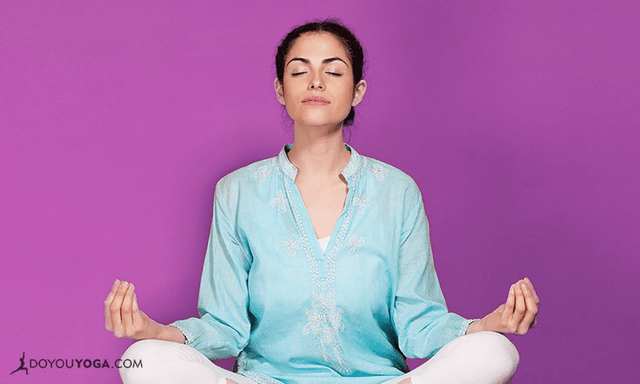Often in a yoga class, the teacher might encourage you to “relax.”
You’ll be in a pose or particular part of the sequence that’s really hard, and then you hear that word. Really, this helpful suggestion is akin to your dentist's request for you to relax while he’s drilling into your tooth.
Relax? How can you ever relax while doing something so challenging? Well, let’s see.
The Relaxation Trigger
Relaxing while doing something strenuous takes effort and can even be counterintuitive. Initially and then over time, it comes with greater ease. When we find this “muscle” in our brain and use it on command, we find greater ease in life overall.
Amazingly, controlled relaxation allows us to perform better. Ask any athlete, any CEO, doctor, fireman, or military personnel; the ability to relax in the face of stress is one of the keys to success.
So, how do we train this muscle and build this skill? Here are some ways to relax in a multitude of situations, on the mat or off.
1. Breathe.
Find a breathing technique that allows you to develop a rhythmic flow of breath. On a biological level, deep breathing stimulates the parasympathetic nervous system, which controls relaxation. So it’s not just magic; it’s science.
In yoga there are many different styles of breathing techniques, or pranayama. While on the mat, we typically use a style called ujjayi breath in which we constrict the back of the throat on the exhale to make a whisper sound.
You wouldn't use this particular style while running or at the office, but focusing on the breath and finding a rhythm are still key in these circumstances. Remember that breath and a consistent flow is at the heart of the matter for this technique.
2. Feel your feet.
One of my students is a cardiac surgeon. One day she shared that after a few months of consistent practice, she could really feel her feet at work. It helped her stay grounded when there was chaos all around.
“Feeling your feet” doesn’t mean bending over and touching your toes. Instead, root strongly into your legs and feet. This makes tremendous sense both on and off the mat. When we set a firm foundation, we show our body that we’re ready, committed, and present. These actions free up our mind and body, making room for relaxation.
3. Remove distractions.
Oh, the cell phones are everywhere these days—even on the yoga mat! I once had a student with flash cards at the front of her mat, studying while practicing. When our space is set up for distractions, there’s no way to relax. Whether it’s on our yoga mat, at our desk, or what we bring on a run, these actions all help or hinder the relaxation process.
4. Let go of attachment to results.
In our “work hard, get results” culture, letting go is difficult. The Buddhists call this “attachment,” and they say it's one of the leading causes for suffering in our lives. Since suffering is at the heart of discontent and unhappiness, shaking the idea of being attached brings not only relaxation but also happiness! Sounds great!
This, however, is one of the hardest things to do. Just ask any golfer. Whether a weekend warrior or a professional, everyone misses as soon as the focus is to get the ball in the hole.
When you let go of your attachment to results, your focus is heightened and you relax. In many cases, that’s when you start to hit the right spot. If we can head into things for reasons of loving what we do, favorable results will arise more naturally.
5. Focus on one thing at a time.
In yoga postures, there’s a progression from entering the pose to discovering its full expression.
If we rush to the “end game” or the final expression, we miss all the good stuff along the way. ~Karen Fabian
The process is a part of the pose, and it affects how it looks in the end.
When we multi-task we can’t relax. The American Psychological Association reports “doing more than one task at a time, especially more than one complex task, takes a toll on productivity.”
To apply this in practice, avoid merely hearing “Downward Dog” and shoving our body into the pose. Instead, adopt a more mindful progression of setting up a base, feeling the primary action of the pose, and letting it unfold in a more natural way.
6. Stay in your own lane.
Imagine the new yoga student next to the practiced yogi. The new student tries to do everything the yogi does, but within a few minutes is exhausted and frustrated to boot.
Imagine the entrepreneur who is always distracted by what is happening in the industry and trying to create features and functionality that mimics what others are doing. It’d create stress and compete with relaxation for sure.
Find your zone. Stay in your lane. Have confidence that you’re on the right path.


